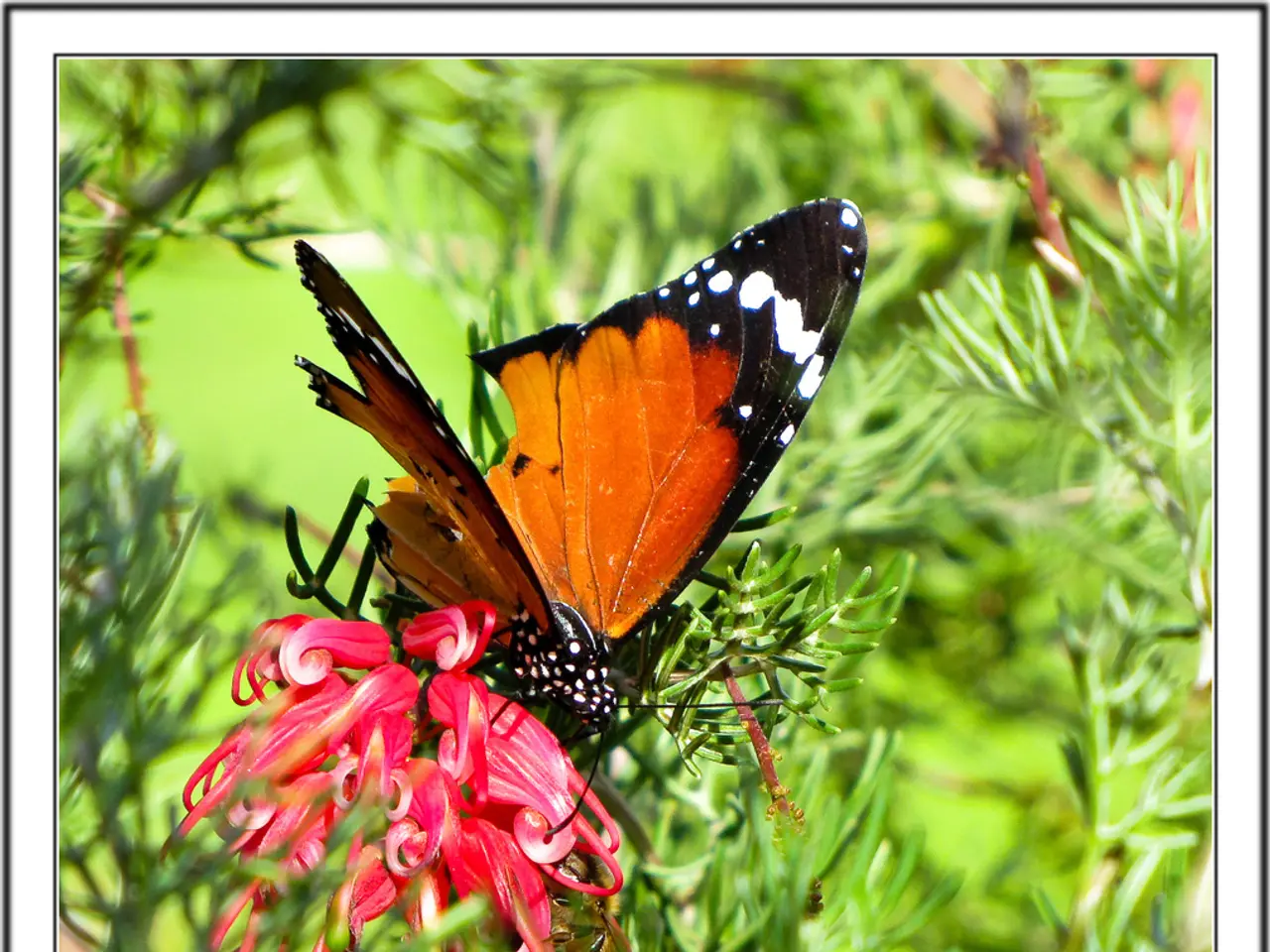Guide for Assisting Monarch Butterflies: Practical Steps You Can Take
In recent years, the population of monarch butterflies has been facing significant threats, leading to dramatic declines. Here's what you can do to help.
Habitat loss has been a major issue, with both breeding and overwintering habitats being reduced. In the U.S. and Canada, milkweed - the only plant monarch caterpillars eat - has declined due to agricultural expansion, urban development, and herbicide use. In Mexico, deforestation in the overwintering sites threatens the survival of these beautiful insects.
To combat habitat loss, it's essential to communicate with managers of roadsides and rights-of-way about the need for more milkweed and nectar plants. Avoid summer mowing of milkweed stands to protect developing butterflies.
In gardens and conservation areas, avoid using pesticides on milkweed and nectar plants. An integrated pest management (IPM) approach should be used to reduce pest pressure instead. Liatris, Aster, and Goldenrod are native wildflowers that provide copious nectar to adult monarchs and other pollinators.
To create an ideal habitat, milkweed and other native nectar sources thrive in full sun and should be grouped together in clumps to attract butterflies. A sequence of plants that bloom from midsummer to fall should be selected to provide ample nectar for breeding and migrating adult monarchs.
Pesticides and herbicides also pose a threat to monarchs. Widespread use of herbicides like glyphosate in agricultural areas has killed milkweed plants, reducing breeding habitat. Pesticides can also directly harm monarchs. To minimise this impact, avoid using pesticides on milkweed and nectar plants.
Climate change is another factor affecting monarch survival. Changing weather patterns can affect migration, breeding, and overwintering conditions. Extreme weather events like storms, droughts, and unseasonal temperatures can harm monarch survival rates.
Monarchs are also affected by parasites such as the protozoan Ophryocystis elektroscirrha, which weakens butterflies and reduces lifespan. Disease and predation are natural threats, but they can still be harmful.
Conservation efforts focus on habitat restoration, reducing pesticide impact, and protecting overwintering sites. Resources to learn more about monarchs include Monarch Butterfly Journey North, Monarch Joint Venture, Pollinator Partnership, and Xerces Society for Invertebrate Conservation.
Photos of Liatris are available by Beverly Turner, Aster by Jerry A. Payne, and Goldenrod by Richard Gardner. Together, we can help protect these iconic insects and ensure their survival for future generations.
- In the realm of environmental science and health-and-wellness, promoting pest management strategies that exclude pesticides on milkweed and nectar plants can significantly aid in conserving the endangered monarch butterflies.
- By adopting a lifestyle that incorporates gardening practices that foster milkweed and native nectar sources like Liatris, Aster, and Goldenrod, we can create ideal habitats for monarch butterflies and bolster their decreasing population.
- In the broader scope of lifestyle and environmental-science, it's crucial to engage in conservation efforts targeted at restoring habitats, minimizing pesticide impact, and safeguarding overwintering sites to ensure the long-term survival of the iconic monarch butterfly for future generations.




